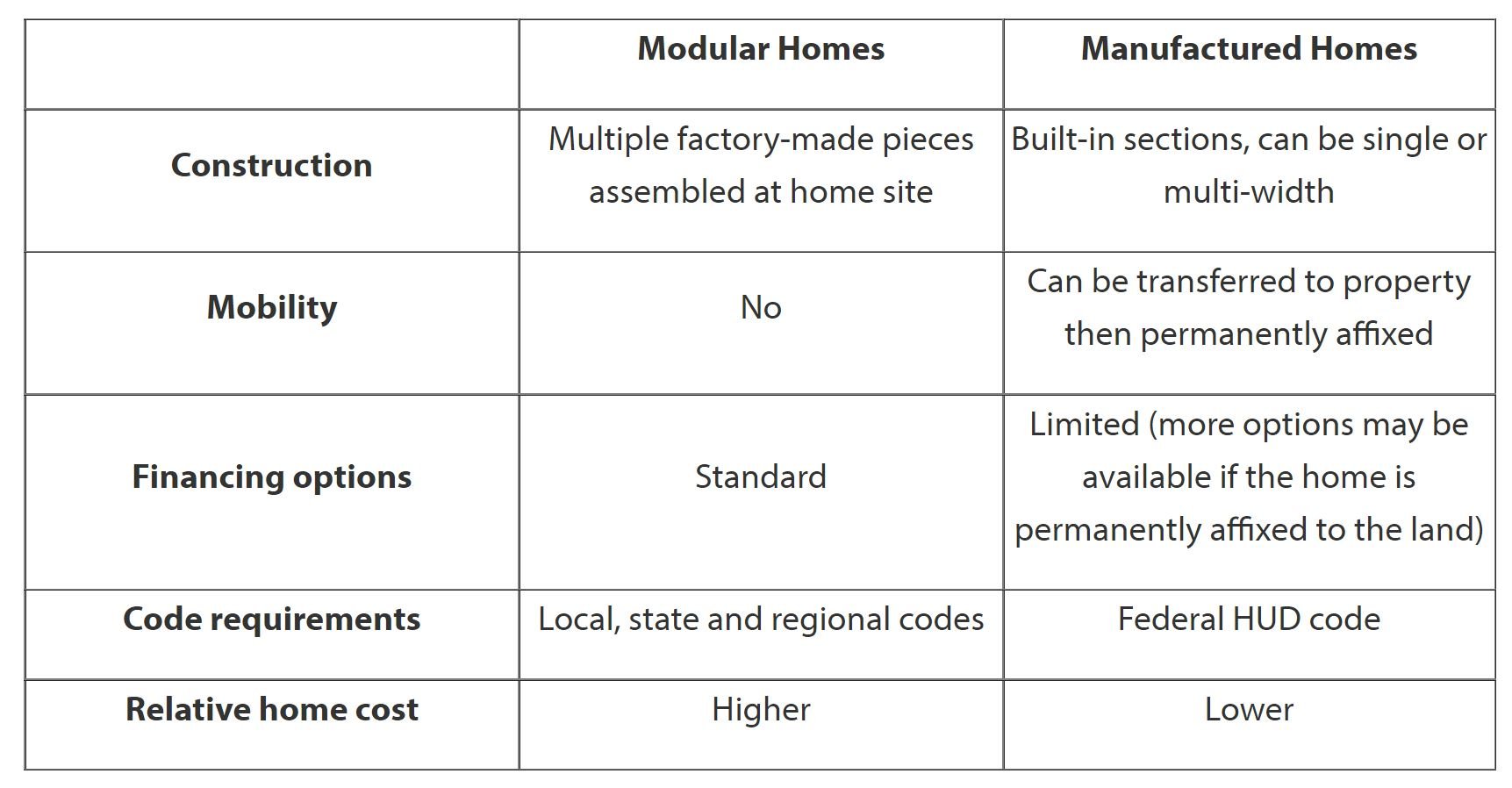Modular and manufactured homes are both prefabricated structures, however, there is a noted difference between the two. Confusion abounds because many real estate professionals use the words Modular, Manufactured, Doublewide, Mobile Home and Trailer seemingly interchangeably. Let’s see if we can clear up the confusion.
First we must understand that the term “mobile home” is obsolete and refers to transportable homes constructed prior to June 30, 1976. This is an important date that becomes a critical date to keep in mind. After this date, the building codes changed drastically and new building standards were adopted.
The major distinction between a modular and manufactured home- the standard to which they are constructed. Modular homes are built to building code and manufactured homes are built to HUD code. These are two distinctly difference codes. When a manufactured home is completed, it is inspected by a HUD certified inspector in the factory. You can verify that a manufactured home has been inspected by the metal tag which is placed on the outside indicating it meets the HUD code (one tag per section). They HUD code is a federal code and explains why they can be placed anywhere in the country once they are built. Modular homes do not have these metal tags on the outside as they are built to meet the local building code in which they will be located. The final inspection for these structures are conducted by approved inspectors for the area they are located and not in factory.
Another specific fact that makes modular structures different from manufactured homes is that a modular home is not constructed on a chassis. The metal chassis used to transport a modular structure to the site does not remain in place and acts solely as support for transport purposes only. Manufactured homes are built 100% off site and constructed on the chassis. The chassis is an important intregal part of the structure that remains in place. The chassis allows for the manufactured home to be placed on foundation systems which are varied and can include full foundations, in-ground piers or pads. Modular homes do not have the ability to be placed on pier or pads.
A couple distinctions that affect your appraisal and lending ability also are related to these differences. Modular homes are treated similarly to stick built structures and have the least restrictions. When appraising a modular home, it is essentially treated similarly to an on site stick built structure and typically there are no lending restrictions.
Conversely, manufactured homes are different. When appraising manufactured homes, it is typical to only use other manufactured sales as comparables. Also, there are many lenders that will not loan on properties that are manufactured homes. This reduces the size of the typical buyer pool and can negatively impact the value for this reason.
Lets circle back to the June 30, 1976 date. When appraising a manufactured home, it is important to locate the Certification Data Plate which is typically located on the interior of the home under a kitchen or bathroom sink. This information is necessary to prove the date of manufacture because lenders that do allow for loans on these types of structures want to verify it was manufactured after this date. Those homes manufactured prior to this date do not qualify for any of your typical financing- conventional, FHA, USDA or VA financing. This can severely inhibit the marketability for these types of properties. There might be some small portfolio type lenders that will allow financing on these older units, but they are few and far between.
When making the decision to purchase a modular or manufactured home, know the differences as these can significantly affect your ability to market the property and obtain financing. If you are unsure as to the type of prefabricated structure you are dealing with, give our office a call. We specialize in appraising all forms of prefabricated structures and have the experience to help you.

